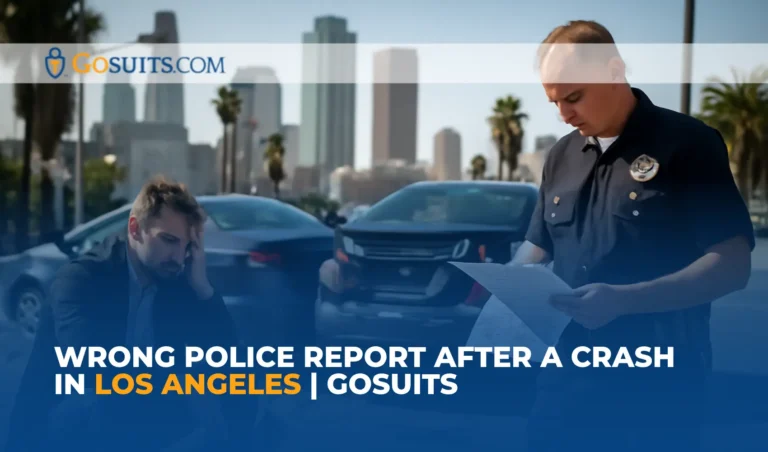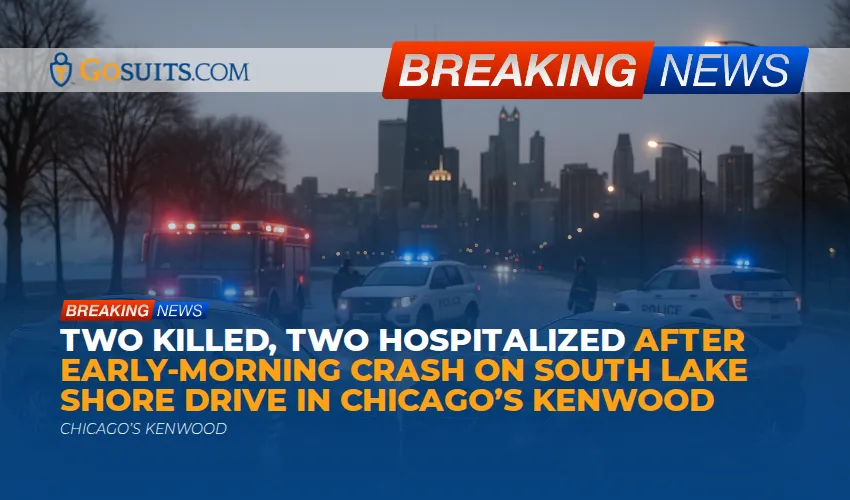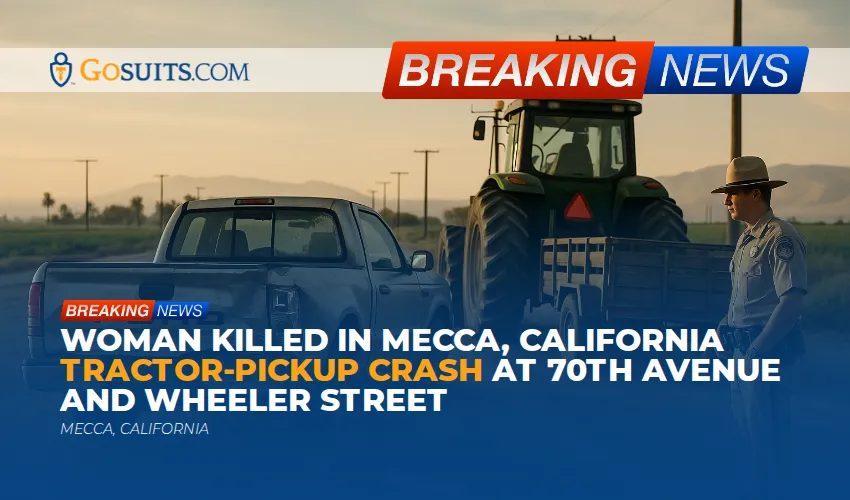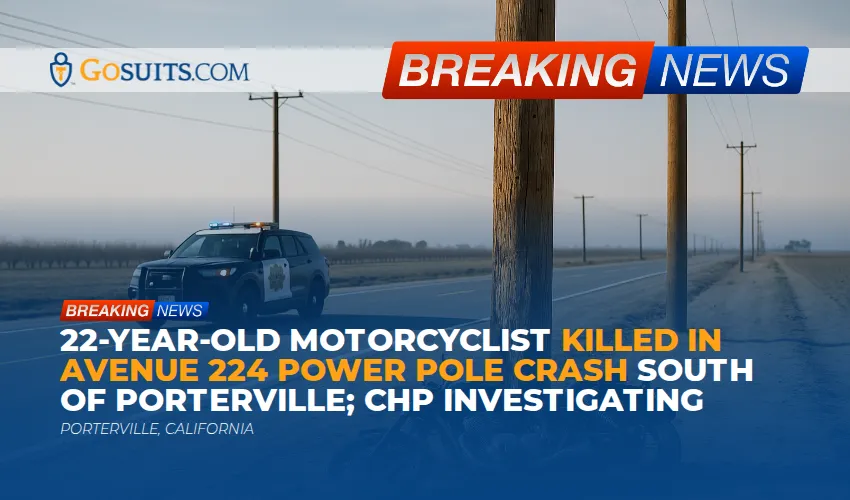- What happens if a police report about your Los Angeles car accident is wrong?
- Why do police reports matter in Los Angeles and what can they do in a civil case?
- Which agencies write crash reports in Los Angeles and how do you get one?
- How do you spot and document errors in a Traffic Collision Report?
- How can you dispute or correct a police report in Los Angeles, CA?
- What evidence can counter a wrong report and shift liability?
- How do report errors affect insurance claims and settlements in California?
- What California deadlines apply if you need to dispute the report and protect your claim?
- How does comparative negligence work in California when the report assigns fault?
- What are practical strategies for plaintiffs and defendants when a report is wrong?
- How do you try to change fault if the report blames you in Los Angeles?
- What Los Angeles agency FAQs matter for LAPD, CHP, and LASD report issues?
- How do California courts treat police reports and officer opinions?
- What step-by-step checklist should you follow in LA after finding errors?
- How does GoSuits help with a wrong police report after a crash in Los Angeles?
- Resources
What happens if a police report about your Los Angeles car accident is wrong?
Finding mistakes in your Los Angeles police report after a crash can be frustrating and costly. Insurance adjusters often lean on these reports when deciding fault, and a wrong statement or diagram can shift liability, reduce your payout, or trigger a denial. The good news is that in California, a police report is not the final word in a civil case. You can gather contrary evidence, submit corrections or supplemental statements to the investigating agency, and build your claim using admissible proof. This guide focuses on Los Angeles, CA and surrounding areas like Downtown LA, Hollywood, West LA, Koreatown, East LA, the San Fernando Valley, Glendale, Pasadena, Burbank, Inglewood, Santa Monica, and Long Beach.

Why do police reports matter in Los Angeles and what can they do in a civil case?
Police reports matter because they compile facts, witness statements, scene diagrams, and sometimes officer opinions about how the collision occurred. Insurers often rely on them early in the claim. Still, California law limits what parts of a report a court may consider:
- Official record exception may apply. California’s official record exception allows some public records to be admitted if they were made in the regular course of duty and sources of information indicate trustworthiness. See California Evidence Code section 1280 (Cal. Evid. Code § 1280).
- Driver accident reports are not admissible. Accident reports required by Vehicle Code section 20008 are not admissible in any trial, civil or criminal. See California Vehicle Code section 20013 (Veh. Code § 20013).
- Officer opinions on fault may be limited. Even if parts of a report may be admitted, conclusions about fault can be excluded if they reflect speculation, hearsay within hearsay, or lack foundation. Courts look closely at trustworthiness and whether each statement meets an exception.
Bottom line: a wrong police report car accident Los Angeles outcome is not inevitable. You can dispute a police report Los Angeles insurers rely on and present your own evidence in litigation.
Which agencies write crash reports in Los Angeles and how do you get one?
In Los Angeles County, the responding agency depends on location:
- LAPD usually handles collisions within the City of Los Angeles, including Downtown LA, Hollywood, West LA, Koreatown, and the San Fernando Valley.
- CHP handles state highways and freeways in LA and throughout Southern California.
- LA County Sheriff’s Department (LASD) covers unincorporated areas and contract cities outside LAPD jurisdiction.
How do you request a CHP Traffic Collision Report?
To request a CHP report, complete and submit the CHP 190 form with the appropriate fee to the Area office that investigated your collision. See the California Highway Patrol’s collision report request page (CHP 190 instructions). The report is typically the CHP 555 series.
How do you request an LAPD Traffic Collision Report?
For an LAPD report, you can request through LAPD’s records process. Availability, fees, and methods can vary by case type and timeframe. If your collision involved LAPD, contact the station noted on your exchange information or the Records and Identification Division for current procedures. Be ready with your report number, date, and location. If the collision occurred on a Los Angeles freeway, the CHP likely holds the report.
How do you request an LASD Traffic Collision Report?
If the Sheriff’s Department investigated, contact the station indicated on the information exchange or LASD Records for report availability and instructions. Not all reports are immediately available, especially if a related investigation remains open.
What if the report is not ready or is withheld?
Reports often take days or weeks to complete. Some reports or attachments may be withheld under the California Public Records Act exemptions while an investigation is active. You can follow up periodically with the agency listed on your collision information exchange to check status.
How do you spot and document errors in a Traffic Collision Report?
When you receive your report, review it line by line:
- Check identity data. Names, plate numbers, VIN, insurance, contact information.
- Verify location and time. Intersections, mile markers, direction of travel, lanes.
- Compare the diagram. Lane positions, points of impact, skid marks, debris field.
- Scrutinize statements. Your statement, the other driver’s, and witnesses’ statements. Note any misquotes or missing sentences.
- Look for code errors. Primary collision factor, associated factors, and violations noted.
- Confirm injuries and property damage. EMS response, transport, and vehicle damage areas.
Document every discrepancy. Keep a change log with page and line references. Photograph your vehicle from multiple angles and preserve dashcam or phone video. If you were transported from the scene, your own statement may be missing or incomplete. That is a common source of error in Los Angeles collisions involving EMS transport.
How can you dispute or correct a police report in Los Angeles, CA?
There is no single statewide form that guarantees a correction. Agencies have discretion to add supplements or corrections when presented with reliable new information. Practical steps include:
- Request the report promptly. Use the CHP 190 for freeway collisions (CHP 190). For LAPD or LASD, contact the listed station or records unit with your report number.
- Prepare a written correction request. Identify the specific pages, boxes, and narrative lines that are wrong. Attach evidence like photos, video, EDR data, phone GPS, rideshare logs, and independent witness statements.
- Ask for a supplemental statement to be added. Many agencies accept a supplemental statement from involved parties for the file. The investigator may note your corrections or add an addendum.
- Politely follow up with the investigating officer. Provide concise, verifiable facts. Avoid editorializing. Ask if the agency can create a supplemental report or add your written statement to the file.
- Preserve your contrary evidence for insurers and court. Even if the agency does not amend the report, your materials can persuade adjusters and can be used in litigation subject to the rules of evidence.
A Los Angeles car accident lawyer can coordinate these steps, communicate with LAPD, CHP, or LASD, and build an evidentiary record that stands on its own if the police report remains uncorrected.
What evidence can counter a wrong report and shift liability?
To correct the narrative, focus on objective sources:
- Scene photos and videos. Time-stamped images of vehicle resting positions, skid marks, yaw marks, debris, gouge marks, traffic signs, and signal faces in Downtown LA, Hollywood, or West LA intersections.
- Dashcam or nearby CCTV. Many businesses and residences in Koreatown, East LA, and the San Fernando Valley have cameras facing the street. Secure footage quickly before it auto-deletes.
- Vehicle Event Data Recorder. EDR downloads can reveal speed, braking, throttle, and seatbelt use in the seconds before impact.
- 911 audio and CAD logs. Dispatch times help reconstruct sequences. These may be available via the relevant agency.
- Medical documentation. Records can corroborate timing, forces, and consistency of injury complaints.
- Independent witnesses. Obtain signed statements with contact information. Witnesses often move or change numbers in Los Angeles County’s large metro area.
- Accident reconstruction. In higher value disputes, an accident reconstruction analysis can address speeds, angles, and visibility using physical evidence and roadway design elements.

How do report errors affect insurance claims and settlements in California?
Adjusters often use a wrong police report car accident Los Angeles file to allocate fault. If the report misstates a primary collision factor or omits a key witness, insurers may deny or reduce the claim. California regulations require insurers to conduct a reasonable investigation before denying a claim, and to consider all available evidence, not just a single document. See the California Department of Insurance’s Fair Claims Settlement Practices Regulations overview (CDI Fair Claims resources).
If your insurance claim denied police report error is the reason given, escalate in writing with your contrary evidence and cite the duty to reasonably investigate. Provide your supplemental statement, corrected facts, and any agency addendum. If the other driver’s insurer refuses to revisit fault, civil litigation allows discovery tools to compel documents, depose witnesses, and test the report’s reliability.
What California deadlines apply if you need to dispute the report and protect your claim?
- Notify law enforcement after injury crashes. If a crash causes injury or death, the driver must report it to police or CHP within 24 hours. See California Vehicle Code section 20008 (Veh. Code § 20008).
- File the DMV SR‑1 within 10 days. If anyone was injured or property damage appears to be $1,000 or more, you must submit an SR‑1 to the DMV within 10 days, regardless of fault or whether police took a report. See DMV SR‑1 guidance (DMV SR‑1).
- Personal injury statute of limitations. In most cases you have 2 years from the date of injury to file a lawsuit. See California Code of Civil Procedure section 335.1 (CCP § 335.1).
- Property damage statute of limitations. Typically 3 years for injury to personal property. See California Code of Civil Procedure section 338(b) (CCP § 338).
- Claims against public entities. If your case involves a government vehicle or dangerous condition of public property, a government claim often must be filed within 6 months. See California Government Code section 911.2 (Gov. Code § 911.2).
These time limits are strict. If you are unsure whether an agency like the City of Los Angeles, County of Los Angeles, or Caltrans is involved, identify that early so you do not miss the 6‑month claim deadline.

How does comparative negligence work in California when the report assigns fault?
California follows pure comparative negligence. That means each party’s share of fault reduces their recovery by that percentage, even if they are mostly at fault. The California Supreme Court adopted this system in Li v. Yellow Cab Co., allowing injury claims to be reduced rather than completely barred by partial fault (Li v. Yellow Cab Co., 13 Cal.3d 804).
In practice, if a wrong report overstates your responsibility for a Koreatown left turn crash or a Santa Monica rear‑end collision, your evidence can shift percentages of fault, significantly changing settlement value. The report’s allocation is not binding. Juries decide fault by weighing all admissible evidence.
What should an injured plaintiff do when a police report is wrong?
- Secure the report and attachments. Get the full packet, including supplemental pages, diagrams, and any photos.
- Build a neutral chronology. Timeline your day, route through Downtown LA or the San Fernando Valley, and traffic control devices encountered.
- Preserve video. Ask nearby businesses, rideshare drivers, and residences for footage. Many systems overwrite within days.
- Locate independent witnesses. A neutral witness can outweigh errors in an officer’s narrative.
- Identify roadway conditions. Lighting, signal timing, stopped buses, or parked delivery trucks can be crucial in West LA and Hollywood corridors.
- Request a supplemental. Submit your correction to LAPD, CHP, or LASD, even if the report is not amended.
What should a defendant driver or vehicle owner do?
- Document vehicle condition. Preserve pre‑existing damage, dashcam files, and telematics that support your version.
- Check the narrative for assumptions. If the report presumes speeding or distraction without measurable proof, highlight the lack of foundation.
- Audit the diagram. Incorrect lane labeling or roadway geometry can flip fault in a Glendale or Pasadena intersection case.
- Communicate with your insurer in writing. Provide your contrary evidence promptly so your carrier can evaluate liability fairly.
- Avoid inconsistent statements. Consistency matters more than volume. Stick to facts you know.
How do you try to change fault if the report blames you in Los Angeles?
Changing the official report may or may not be possible, but you can change the outcome of your civil claim:
- Submit a precise correction package. Include page citations, photos, diagrams, and any objective data.
- Use a supplemental statement. Ask the agency to append your statement to the file.
- Seek independent expert analysis when appropriate. An accident reconstruction based on physical evidence can rebut an incorrect primary collision factor.
- Reframe for adjusters. Present your analysis to the insurer with citations to vehicle codes, lane markings, and signal phasing.
- Litigate when needed. Discovery allows you to depose the officer, test memory and basis for conclusions, and introduce your contrary proof. The jury decides fault under California’s comparative negligence system (Li v. Yellow Cab).
How does GoSuits help with a wrong police report after a crash in Los Angeles?
If your Los Angeles police report is wrong, you are not alone. These disputes arise often after freeway crashes on the 10, 405, or 101, and on busy corridors in Downtown LA, Hollywood, West LA, and Long Beach. Our practice focuses on personal injury in California, and we regularly help people address report errors that threaten valid claims. A free consultation with a personal injury attorney can help you understand the process to secure the report, spot inaccuracies, request supplemental statements, and gather the right evidence to present to insurers or a jury.
GoSuits serves clients throughout Los Angeles County and Southern California. We use a technology‑driven approach supported by exclusive proprietary software designed to streamline evidence collection, automate timeline building, and accelerate communications with agencies like LAPD, CHP, and LASD. This lets us move faster without sacrificing attention. Despite our tech advantage, every client has a designated attorney, not a case manager, with direct access for questions and strategy updates.
Our team brings 30 years of combined experience and trial backgrounds. Trial readiness matters because insurers weigh risk. We have obtained substantial results for clients in complex collision cases. You can review summaries of prior matters here: GoSuits prior cases. Results depend on facts and law unique to each case.
Practice areas include motor vehicle collisions, rideshare and delivery crashes, pedestrian and bicycle injuries, commercial vehicle cases, and dangerous roadway claims. We leverage innovative tools to develop fault analysis, cross‑check police narratives, and prepare demonstratives for mediation or trial. While technology helps us work quickly, your case strategy remains attorney‑led from start to finish.
Resources
- California Evidence Code section 1280, Official Records Exception: https://leginfo.legislature.ca.gov/faces/codes_displaySection.xhtml?lawCode=EVID§ionNum=1280
- California Vehicle Code section 20008, Duty to Report Injury or Death Collisions within 24 hours: https://leginfo.legislature.ca.gov/faces/codes_displaySection.xhtml?lawCode=VEH§ionNum=20008
- California Vehicle Code section 20013, Inadmissibility of Required Accident Reports: https://leginfo.legislature.ca.gov/faces/codes_displaySection.xhtml?lawCode=VEH§ionNum=20013
- California DMV SR‑1 requirement, submit within 10 days when injury or $1,000+ damage: https://www.dmv.ca.gov/portal/vehicle-registration/insurance-requirements/submit-an-sr-1-report/
- California Highway Patrol, Collision Report Request CHP 190: https://www.chp.ca.gov/notify-chp/collision-report-request
- California Department of Insurance, Fair Claims Settlement Practices resources: https://www.insurance.ca.gov/01-consumers/130-laws-regs-hearings/05-laws-regs/
- California Code of Civil Procedure section 335.1, 2‑year personal injury statute of limitations: https://leginfo.legislature.ca.gov/faces/codes_displaySection.xhtml?lawCode=CCP§ionNum=335.1
- California Code of Civil Procedure section 338, 3‑year limit for property damage claims: https://leginfo.legislature.ca.gov/faces/codes_displaySection.xhtml?lawCode=CCP§ionNum=338
- California Government Code section 911.2, 6‑month claim deadline against public entities: https://leginfo.legislature.ca.gov/faces/codes_displaySection.xhtml?lawCode=GOV§ionNum=911.2
- Comparative negligence in California, Li v. Yellow Cab Co., 13 Cal.3d 804: https://scholar.google.com/scholar_case?case=6450955600583592296
Frequently Asked Questions
Can you amend a CHP report if there is a mistake?
You can request that the investigating Area consider a supplemental entry. Use the contact details on your CHP 190 receipt or the Area office listed on your report. Provide concise, verifiable corrections. Whether to add a supplement is within agency discretion.
Can you correct an LAPD Traffic Collision Report?
For LAPD cases, contact the station or traffic investigator identified on your information exchange. Provide a written correction request referencing page and line numbers, with attachments. The investigator may add a supplemental entry or note your statement in the file.
What about LASD reports in Los Angeles County?
Contact the involved Sheriff’s station or the Records Bureau. As with LAPD and CHP, ask to include a supplemental statement and provide objective proof for any correction you seek.

Should you file a DMV SR‑1 even if the police already have a report?
Yes. The DMV SR‑1 is separate and required if anyone was injured or property damage appears to be $1,000 or more, and must be submitted within 10 days regardless of fault or whether police responded (DMV SR‑1).
How do California courts treat police reports and officer opinions?
Courts analyze each portion of a report separately:
- Official record exception. A report or portions can be admitted under Evidence Code section 1280 if prepared in the regular course of duty, near the time of the event, and trustworthy (Cal. Evid. Code § 1280).
- Hearsay within hearsay. Witness statements inside the report must independently meet an exception to be admitted.
- Driver reports are excluded. Accident reports drivers are required to make under Vehicle Code section 20008 cannot be used as evidence in any trial (Veh. Code § 20013).
- Officer opinions on the ultimate issue. Opinions that rest on speculation or lack adequate foundation may be excluded. Courts look at whether the officer observed the event or is reconstructing from limited data.
Because of these limits, even a strong report is not conclusive. Your own admissible evidence can overcome errors in a dispute police report Los Angeles case.
What step-by-step checklist should you follow in LA after finding errors in your police report?
Use this concise plan across Los Angeles City and County:
- Get every page of the report. Include diagrams and attachments from LAPD, CHP, or LASD.
- Log each error. Create a table citing page, line, and correction with supporting proof.
- Gather objective evidence. Photos, video, EDR, 911 audio, CAD logs, roadway measurements.
- Submit a written correction request. Ask the agency to add your supplemental statement to the file.
- Notify insurers in writing. Send your packet to all carriers, including the other driver’s insurer.
- Mind deadlines. SR‑1 within 10 days when required; 2‑year personal injury limit; 3‑year property damage limit; 6‑month government claim when applicable (DMV SR‑1; CCP § 335.1; CCP § 338; Gov. Code § 911.2).
- Plan for litigation. If the insurer will not correct fault, prepare for depositions, subpoenas, and expert analysis.






